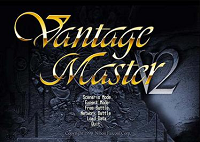
Wonderful treat of a versus tactics game, with both online 1v1 play and challenging single player campaigns.
A match of Vantage Master takes place as a duel between summoners on a tactical hex grid map. The objective is to reduce the opposing Master's HP to 0. The main tool at your disposal is the ability to summon Natials, creatures that get their own turns. Both summoning and the continued existence of a Natial will tax your MP - a resource that is replenished in accordance to the amount of magic stones you control. As such, taking over and protecting these hexes is of vital importance. The victor is decided through territorial control and counterplaying the opposing forces with advantageous Natial matchups - and sometimes with a daring assassination if your opponent spreads out too far for their own good. The gameflow could be compared to classic abstract boardgames, though much more approachable.
There is zero random element, so what makes this kind of thing interesting game in and game out is the amount of different decision points to make, starting from the 27 different Master classes, each with their own stat spread. Stats being attack power (yes, you can directly bonk the opponent, or throw stuff - this is of situational use depending on your Master) to defenses, Intelligence governing not only direct spellcasting but also the amount of MP regen gained from magic stones, speed and movement. In a match, the gameflow is clocktick-based in the style of FFT, with each tick representing an ingame minute, and any action besides waiting adding on more time until the unit's next turn.
A Master with a full arsenal is capable of summoning 24 different Natials, 6 each in 4 elements (which have a circular relationship of strength and weakness). The Natials are all wildly divergent from each other - a sturdy golem, flying petrifying eye, healer mermaid, ice spitting fish, fiery archer, explosive demon, fast pixie, cloud-riding stormcaster and much more all have different use cases. A fully loaded Master can also cast magic to directly heal, petrify, defreeze, damage or change the water level - yes, terrain (and facing) matters. Natials can gain experience and level up if you keep them healed, though the upkeep cost means you may not want to have too wide of a force. Some of them even have a preferred time of day/night that makes them stronger and vice versa! It sounds like a lot, but the clocktick battle system means you only ever have one unit's turn to deal with at a time so it doesn't get overwhelming.
The single player campaign makes sure you naturally get accustomed to all this. After each campaign map you gain a new Natial or Spell, introducing you to new mechanics one at a time. This, and the Master level ups gained also adds another dimension to the game - the levels and skillset changes affect your tactics in a transformative way through the campaign, as formerly mainstay Natials might become role players as you are able to cast more expensive things and your Master becomes sturdier in their own right. If you manage to survive through 27 stages of campaign, the 8 stage Expert campaign awaits to offer a true challenge.
Of course, the versus human experience is even more gratifying, and very adjustable thanks to all the knobs available in free battle mode. This is my sort of chess - an evocative, easy to follow, deep tactics game.
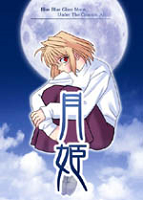
Boy called Shiki comes in contact with death, gains power to see and trace lines that unmake all things and goes mad with the knowledge but is able to live a normal enough life behind his lenses. 8 years later he returns to his familial home in the giant Tohno mansion, soon starts having supernatural encounters and his own killing urges flare up at the same time. That is the initial setting of visual novel Tsukihime.
Akin to Type-Moon's later work Fate/Stay Night, Tsukihime is also divided in several (5) routes each anchored around its spotlight heroine and similarly twists initial expectations as it slowly moves towards the story it wants to tell with each transition. There's no boring entry exposition period here though, as vampire Arcueid's scenario is quite entertaining on its own merits owing much to writer Nasu's ability to depict the terrors lurking in the night and instill a delicious feeling of paranoia. Even dreamlike glimpses of conversations that seemingly make no sense until hours later are highly enjoyable as they add to the air of uncertainty. While dwelling on the mood I have to give a shoutout to the VN's use of filtered photographs as backgrounds, which is a technique I have an affinity for.
However Tsukihime is an uneven work, and nowhere is this more evident than on Ciel's route. Seemingly meant to be a bridge between the Near and Far side of the moon routes, it misses on nearly every count from the continuation of focus on external terror that has already reached its expiration point to the clumsy integration of themes of internal terror that come to the fore on the Far side routes. Not the only stumble in the writing, but by far the most prominent and one that does not have anything of value to outshine its shortcomings.
It is on the Far routes that Tsukihime's emotional core is laid bare. Akiha, Hisui and Kohaku's routes all almost entirely take place within the grounds of the Tohno mansion and are focused on Tohno family's secrets and the wounds caused by them. These are very raw and messy stories, with people splashing their hurt around and resulting in more hurt as everyone tries to get rid of the long shadow over their hearts in their own ways. While Nasu's unique style of writing was very good in depicting the combination of excitement and dread of terrors in the night, it truly excels in portraying descent to madness and raw pain on the Far side routes. The sorrow of the bad endings is heartrending, and it feels like a real relief when you get to one of the better conclusions and the healing can begin.
A big theme throughout Tsukihime is its Gothic underpinnings in how night, and especially moonlight are portrayed as having an element of supernatural beauty and grace. While casual cruelties are committed beneath the mask of polite society by day, it is moonlight where all truths are revealed and even soon to be mortal enemies may have a talk where they bare their souls. It is fitting that the epilogue is a simple chat between two people in the night, and a satisfying conclusion to the journey. Tsukihime is a raw, messy, atmospheric, deeply interesting read.
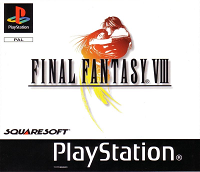
Final Fantasy VIII on a surface level is a logical evolution of the FF franchise. With increased technological output the designers try their hand at a blend of a modern, futuristic and fantasy setting, spinning a new grand tale of military schoolers fighting magical problems across the world. No one could have known it would soon sink into madness.
To claim that FF8 has an impeccably designed scenario or tight gameplay would be a falsehood. Yet it is equally or more compelling than many of the greats of the genre and that requires some unpacking. Perhaps the answer lies in how none of the baffling elements of FF8 exist in a space that could be considered substandard or so called textbook "bad", instead coming across as alternate evolutionary forks from the primordial ooze that was eventually shaped into commonly accepted good design practices.
The beating heart of FF8 is composed of numerous high impact setpieces, fueled by gorgeous prerendered backgrounds, expressive character animation and the occasional FMV. Scenes that are riding high on emotion are constant - an oppressive parade, a romantic comedy shown through a dream, an intense battle between flying educational facilities. Major characters don't get the kind of fleshing out one would expect, instead defined by how they participate in these larger than life scenes.
The connective tissue between these is made of lovingly crafted worldbuilding - that is mostly optional and easy to miss for the less inquisitive player. Even the bits and pieces woven into the main plot seem almost deliberately downplayed so they don't steal attention from the Big scenes the game wants its player to experience, and yet it is by examining these that some very interesting setting details such as the regional isolation (due to airwaves being unusable because they are flooded by a sealed sorceress in space) fall into place. That's wild and high concept, but the game barely calls any attention to numerous very interesting things about the world and the people that live in it. That's the kind of game FF8 is.
Gameplay follows suit. An ordinary game would place its minigames in clearly delineated corners. FF8 dedicates an entire button to a talk prompt specifically for asking people if they want to play cards with you, and then has a salary mechanic that docks your pay if you play cards on the job, but you can raise your pay grade by taking written tests. Everything about the battle system is some kind of bizarre barely holding together experiment that nonetheless leads to a roughly normal difficulty curve for the unspoiled player and offers a lot to work with for an expert. The hidden nooks of the earth may not contain treasure in the traditional sense, instead being host to some of the game's most bizarre bits of lore.
What ties all of the game together in addition to its spectacular visual style is Nobuo Uematsu's masterful work on the music. FF8 has possibly the most consistently great soundtrack of any game period. With FF8's top notch presentation and unabashed sense of design, there is a lot to love in this utterly weird, unforgettable gem of a title.
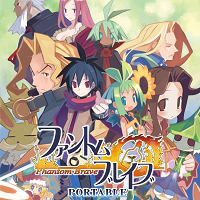
The crown jewel of NIS's experimental SRPG lineup on the PS2, Phantom Brave takes place in an archipelago called Ivoire where young chroma Marona lives on an island of her own, with phantom guardian Ash watching over her. Thanks to Marona's ability to commune with and confine ghosts to objects there are certain jobs she is uniquely suited for but those same talents also leave her struggling at making human contact, since her reputation causes her to be feared.
The scenario, then, is one of Marona carrying out her largely thankless job, meeting all sorts of people and creatures, and despite many hardships her effort eventually wins through and she starts making meaningful encounters. The presentation of the story complete with a narrator for Marona and Ash's inner worries, along with Tenpei Sato's heartful musical score and welcome moments of levity make the plot a thoroughly heartwarming one. As more characters start making their moves eventually the focus shifts to the matter of the sealed demon of Ivoire that is the cause of the populace's overwhelming fear of the supernatural, and the highly compelling conclusion. There's a very genuine sense of emotion throughout.
Aside from the plot, the lush and vibrant islands of Ivoire also lend themselves to SRPG battles! Lots of them, and it is quite the fresh take. There is no grid, so each character has a fully free movement radius to work with, and the system is made around Marona's Confine ability - all of her allies are recruited phantoms, which you will confine into objects lying on the battlefield and then have control of for several of their turns until the confinement connection breaks and they leave, sometimes along with the object they were confined to.
Weapons of these battles are also quite unique, since while you can buy normal swords and axes from a ghost merchant you can just as well bring in any of the objects such as sunflowers, rocks, trolleys, etc. that you have previously taken home from a battlefield, or even improvise in the moment and use present objects or even other units as weapons. It's very expressive and a lot of fun, even though it ultimately is very busted once you're looking at how to get to the next level of expertise.
The Phantom Isle serves as a home to all your recruited phantoms, and some of them have special jobs, while others are simply battle units. A fusionist can move stats and skills from a weapon to any other type of weapon, for instance, allowing you to come up with some truly inventive attacks with the sprite animations appropriately changed. You get a nice little "while you were out" message whenever you return to the Isle after a battle with what your phantoms were up to, which makes the Isle itself feel alive (with ghosts, but nevertheless). Nearly any unit encountered in the wild can be recruited as a phantom type, and the game is full of imaginative and colorful critters befitting the beautiful art stylings. Battle music is also fitting of the beauty of Ivoire, featuring flutes, violins and harps at the forefront - while turning more serious as the situation demands it.
Phantom Brave is something special, a warmhearted and expressive experience like few others. The tropical island world of Ivoire is truly one of wonders.
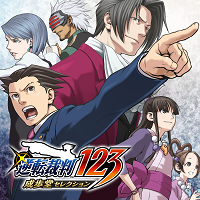
That game series where you play as a defense attorney (mostly) and leverage evidence, witness testimony and some wildcard courtroom tactics to prevent innocent defendants from getting convicted while finding the real killer of each case.
The subject matter sounds like it could turn awfully serious real fast but Phoenix Wright's cartoony aesthetic is very approachable and prevents things from getting dour. The defense, prosecution and witnesses have bold and bright designs with lots (and LOTS) of lovingly crafted sprite animation, with both visual and audio design pulling heavy duty. People physically recoil when presented with a convincing counterargument, questioning music stops when you raise an objection (complete with the iconic soundbite) replaced by a triumphant objection theme that kicks in when you slam the evidence in their face, and that is just scratching the surface. Despite the games originating on a modest handheld courtroom segments have production values worthy of a theatric TV drama, which makes the proceedings tremendously entertaining simply to watch.
The main character himself is brilliantly cast as frankly an endearingly underprepared dipshit who flies by the seat of his pants in every trial as him and the player both are introduced to crucial facts about the case at the same time. Phoenix is a quick thinker on his feet though and thus satisfactorily employs both the position of bumbling and stammering into a penalty when you make a mistake and believably making the needed leap in logic to turn the trial around when it is time for you to figure out a big trick in the case. Equally important in the character department are the prosecutors, a highly charismatic cast of antagonists who are fully aware of the letter of the law and will more than gladly make your life as difficult as possible, but very satisfyingly get their hubris paid back in full when you win the case. Dialogue is on point as well, razor sharp wit wielded on both sides of the battlefield with the mystifying witnesses and mystified judge caught in the crossfire.
Gameplay itself relies on pressing witnesses for information and pointing contradictions in their testimony contrasted to the evidence you have and other such logic puzzles. It's a lot of fun, in more than half thanks to the sharp dialogue. In bigger cases there are also investigation segments taking place outside the courtroom, and while these aren't as entertaining as the courtroom segments they provide a chance to unwind a little and enjoy chats with friends, quirky strangers, and downtrodden detectives while uncovering new facts in the pursuit of truth.
Scale of the cases starts bitesized and deliciously simple in 1-1 and as you get accustomed to the game it provides more with higher stakes, even managing to rather successfully bank on the player getting invested in the characters when unloading what it has in store for decisive moments, hitting some real emotional high notes. Sequels provide more of the same but with a satisfying continuing character arc and just enough new twists to keep things fresh and then go above and beyond. While all these games are enjoyable I consider the first four games to be the greatest, as some parts of later entries feel like retreading old ground or overly gimmicky. Ace Attorney games are a very simple but unique idea executed to absolute perfection. An utter delight.
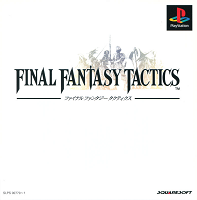
Final Fantasy Tactics makes an immediate impression from the moment it is launched. Promising a cross between the stylized fantasy of FF's trademark designs and medieval political intrigue, Tactics is the first take on world setting known as Ivalice.
And it certainly delivers. Highly detailed and expressive sprite art depicts battles, machinations and whimsy alike. It goes very well with 3D polygonal battlefields that employ proper use of height and depth and atmospheric effects such as rain, with Hitoshi Sakimoto's soundtrack providing an exact fit to each situation. The story presents a lot of directions between its use of political factions and demonic resurrection, but ultimately is a rather well told tale of a friendship between a pair of youths - noble and commoner - and the paths they take through their lives. Worldbuilding is rather excellent as well, with the script's style of blunt utterances giving the warring characters a lot of unique flair.
Further examination also proves the game's combat engine to be shockingly robust. Freeform job system including a monster recuitment system allows for a very high degree of mixing and matching your dream units, while the clocktick based battle system allows a degree of granularity I much prefer over phase-based efforts. Fully deterministic combat formulae and proper projections of damage and turn order also allow for proper tactics - the only blemish here is lack of a move undo function.
That's all well and good already, but the engine's simulationist features take it over the top. With elements in vein of the aforementioned weather effects, unique movement abilities such as jumping over gaps in terrain that only exist on a handful of maps, quotes in the game's unique writing style occasionally busted out for certain abilities, dying wails leading to a countdown to crystallization, and a strong AI that considers a large amount of options, the battles feel like more than just as an abstract math exercise. Pity, then, that the game is let down by its completely lopsided job balancing and a severe lack of variety in enemy forces. An astounding waste of potential for an engine that has a ton going on under the hood.
...which is where the fact that this game is lucky enough to have a modding scene comes in. Mods (LFT in particular, which in interests of full disclosure I lended a helping hand in making) take the desperately wanting battle system and give its myriad options a facelift in the form of a real reason to be used. It is a true delight to engage in team making and trying out different elements of the system in LFT, and it elevates all other aspects of the game in return when there are no feelings of disappointment present. FFT is a wonderful creation with immense amounts of heart and thought put into it that needed a little bit of fan support to make it truly shine the brightest, and what exists today is the greatest tactics RPG out there.
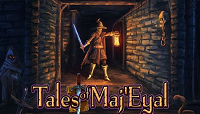
ToME has taken a long evolutionary path from an Angband fork to a roguelike that could be described as the premium turn-based solo combat simulator. The DNA in its blood is that of a classic roguelike, but reliance on consumables and a world entirely consisting of a single dungeon are long gone, replaced by robust cooldown-based tactical skillsets and a moderately fleshed out fantasy world with dozens of smaller dungeons to murderhobo your way through.
The choices begin at the character select screen. There are over 30 classes that offer an astounding amount of flavor and play variety, from simple ones such as the archetypal Berserker or Archer to some real oddities such as timespace trickster Paradox Mage or psionic gunner Psyshot. You combine one of these with a race such as Dwarf, Yeek or Skeleton for their in-built passive and active capabilities and are ready to go.
There are a lot of build variations within a single class as well. Which statistics to raise at level up is obvious for some builds and a consternation to others, but the real business is in talent points. Whether you pick up talents at all, for a 1 point dip or an all-out focus, and which locked talent trees you decide to unlock shape the vast majority of your character's toolkit and recontextualize your options. There are experimental combinations to look out for the savvy builder that take classes beyond their intended scope, such as a sun paladin that wields a zweihander and shield at the same time - and a particularly impressive piece of found gear may alter your plans accordingly.
The world itself is largely fixed from playthrough to playthrough barring a few random events. You've got your towns for shopping and an assortment of sidequests, a main questline to follow, and plenty of dungeons to crawl. These each have their own identity with a certain set of themes, floor count, terrain types and enemies including the boss, but the layouts of each floor are mostly randomized. Most enemies enable you to try out your kit in a satisfactory way in a real combat situation and marvel at the carnage while not posing that much threat, but not infrequently genuinely dangerous situations do arise.
It is at these points where ToME is most in its element. With the random element of the map terrain and the threat at hand, and your chosen class talent set augmented by universal inscriptions, all of them with their own cooldowns and resource costs, you can be drawn into a long and deadly battle of wits where you need to carefully properly manage all of your talents to merely survive, let along conquer the foe - and consider that discretion can quite often be the better part of valor.
And so it goes, accruing levelups and new equipment, adjusting character plans based on the reality of the scenario, hopefully eventually conquering the endboss and maybe some optional toughs. A jolly good time. There's a bunch of difficulty levels ranging from normal to the edge of reason and beyond, and the lives system lets you dictate how much traditional roguelike permadeath is a factor - I personally enjoy the middle setting that allows leeway for the occasional misjudgement (especially given the length of the default campaign that ranges at over 10 hours), but still calls upon the player to have a proper build and strategy to clear the game. There are options to go full purist or just enable infinite lives as well. ToME's unparalleled breadth of inventive character skillsets in a turnbased game and a hardcore tactical bent make it a very engaging adventure to take on time and time again.
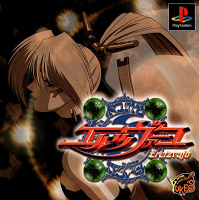
As a PS1 kid at the turn of the millenium, most months I would get a magazine with a demo disc featuring a sampler of the latest releases, since getting to experience a dozen or so games for a fraction of the price of one and reading about many more still was amazing value. This was the root of my semi-encyclopedic knowledge of PS1 obscurities, as well as my enjoyment of a wide variety of games and a big influence on actual game purchases made. On one such demo disc I encountered the perfect videogame.
Evil Zone is a 3D fighting game in the vein of Tekken, with 2 button controls - one for attacking and one for blocking. What move you perform is altered with directions, single/doubletap/hold, and in some cases based on distance, leading to a decent moveset in spite of the single button, and all inputs are shared across the whole cast. There's a big focus on projectiles, including ranged throws that place a capture circle on the ground. Block button blocks, and properly timed performs deflections and throw breaks. It's very easy to pick up, pretty well thought out and responsive, though obviously not exactly an esport.
There's a very pleasing aesthetic to the game with moves that are real cinematic looking but don't fall into the trap of being a long break from the gameplay. Longer throw animations seen for a second time during the match are further shortened. Flame dragons, lasers and clones are just basic moves thrown around, and charging the length of your remaining lifebar grants access to supers that become a special spectacle if they are the finishing blow. Each character has their own theme music to go with their stage, and they are some fine jams indeed.
The cast of characters is outstanding. Plot isekais a bunch of combatants to deal with a witch that is breaking free of the sealed EVIL ZONE, and they are quite the delightful bunch. Running the gauntlet of 90s anime archetypes properly drawn and modeled to style, we've got: A sentai hero, brooding magical girl, fantasy mage, battle idol, martial arts lady, space mercenary, yakuza onmyouji, heavy metal satanist, immortal trickster goddess, and endboss charismatic witch. They could have easily been left at cheap pastiches, but there's a rather surprising amount of charm and depth to them.
Which brings us to possibly Evil Zone's most amazing feature, the story mode. You've got pre- and postbattle fully in-engine banter cutscenes between the fighters where personalities clash and allusions to backstories are made with each character having an unique scenario and ending, but that's just the start. Each character has their own style of "episode previews", and these range from a simple narration in the style of the character's genre to truly inspired like onmyouji Keiya's advice radio show that takes in questions from other fighters. While voice recording quality and direction are disastrous the actual line reads and dialogue are some of the most solid 90s dub work out there and a lot of fun.
There is a completely absurd amount of setting detail to Evil Zone. Clearing the story with each character unlocks their and the world's encyclopedia entries, and these go deep into the lore of all the characters, moves, backstories and external details and a bunch of things that don't even appear in the game proper. It's an amount of detail work that could carry a tabletop campaign or an RPG but here it is in the budget fighting game. The game itself also has a ton of needless detailing that nevertheless adds its own touch. Characters are rather chatterboxy in battle, with 2P costumes having a fully unique set of voice clips for some reason. Round start and end narrator voices are available of each character, there are 8 different charselect poses and quotes for everyone, there is a 5 minute congratulations skit that has the cast joking around about the sequel (oof).
Evil Zone is a lot in a little. Cool no effort fun that oozes joy to fire up every now and then. The dankest game that could.
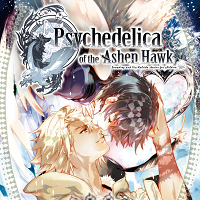
Psychedelica of the Ashen Hawk is a visual novel by the Otomate label. It is a sequel of sorts to Psychedelica of the Black Butterfly which I have not read at time of writing this, but the story stands alone.
The intro movie plays and it is immediately apparent that the aesthetic is brilliant. Taking place in a medieval european-styled town of eternal winter, the game features a lot of very beautiful people in snow which is pretty much my heart's hometown right there. Character portraits and scenery alike are exquisite. Akiko Shikata and Eiko Shimamiya provide opening/ending themes that are as beautiful as the aesthetic and noted Suikoden arranger Yuji Yoshino gets a chance at composing a full soundtrack, proving worthy with a suitably folkloric soundtrack accentuated with chanting.
In this wintry town there are two clans - the Wolves and the Hawks - that live in an uneasy alliance, and a legend that tells of a witch that is the bringer of calamity. The main character, Jed, was born with the eye of the witch - which is why she was raised by the Wolf matriarch for her own protection as and still is masculine presenting. Now living in the outskirts of the town in a tower in coexistence with the "Tower Overlord" - a languid man who calls himself a ghost - Jed is a handyman of the Wolf clan, taking on all sorts of errands around town.
A short time before the annual Masquerade festival Jed is tasked with secretly finding and retrieving the Kaleido-Via - an artifact that symbolizes peace between the Wolves and Hawks - as it could be disastrous for it to be missing on the day it is supposed to be in public. In order to go areas under Hawk jurisdiction where Jed would cause a lot of unwanted attention, she dons the feminine presentation and name of Eiar. And so you go about the town learning more about it, the people and Kaleido-Via, getting different reactions depending on which persona you are wearing, and eventually uncover things that shake the very foundation of the setting.
The game is fully voiced and every performance is quite good, with special mention to Tower Overlord's lazy trickster mannerisms. Speaking of the characters, Jed is one of my favorite protagonists of all time. She is multi-faceted, courageous and charismatic with a sharp wit and plenty of inner depth, and it is easy to see why people flock to her. As you'd expect for a game labeled otome, there are many guys who potentially take an interest in Jed throughout the course of the story for their own reasons and have their own routes, as well as are fully fleshed out characters in their own right.
But interestingly, these routes are just some of the conclusions available. While getting into a committed relationship with one of the suitors is a perfectly valid choice to make, ultimately what could be called the true ending lies beyond the weighing that such a normal life is perhaps impossible in the circumstances of the latter half of the story. I really loved the true ending to this game, as well as various other branches elsewhere. Psychedelica of the Ashen Hawk is a truly special story.
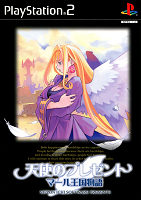
The Marl Kingdom series entry has arrived. Consisting of Rhapsody, Little Princess, Angel's Present and Marl Jong, only the first game in this series was ever localized, but some rudimentary Japanese knowledge is enough to embark on a wonderful musical odyssey.
It's an RPG world with warm visuals and a cast that may break into song at any moment. Rather than existence-devouring threats the stakes are generally based on the characters' feelings and the objectives rather small scale, though things ramp up appropriately towards the end of certain climactic scenarios. Main character introductions and bigger developments are accompanied by a musical number complete with onscreen lyrics and choreography, and these are all appropriately well orchestrated. In addition to these Tenpei Sato also does a good job on providing the BGM of the games, with a handful of exceptionally emotionally hard-hitting tracks.
It is fun and relaxing to futz around sleepy little towns and deal with problems like having to catch a fish, win a contest or investigate a suspicious ice cream shop. The main characters of Rhapsody and Little Princess are puppeteers who guide their charges with a trumpet, and the gameworld has a nice few secrets in it dedicated to finding hidden puppets, beuatiful illustrations and things of such ilk. Battles also occur and these tend to be rather easy and inconsequential affairs that feel more like system experiments than anything that got a large amount of thought put into them.
Angel's Present, the third game, takes a different tack. While Rhapsody and Little Princess are singular linear plots and Marl Jong, versus mahjong game extraordinaire, serves as something of an epilogue, Angel's Present is a collection of short stories from various points in the timeline starring the characters you (should) already know and love.
These scenarios are powered up and feature a new sort of battle system that has you put your characters in up to four columns four deep, with a controlled leader up front and AI supporters in the back ranks. Who you match also decides what sort of combination abilities you will be able to use. These 16-character brawls are a lot of fun visually and possess some degree of difficulty as well, serving as an experimental gameway to Nippon Ichi's SRPG efforts. You can also bolster your ranks occasionally by recruiting one of the rather cute monster enemies after the battle, and you can transfer these between stories as well.
Each of these stories has a different cast, occasionally giving spotlights to characters that were never playable before, such as when witch Marjoly's gang of misfits manages to lock themselves inside an interdimensional freezer. The final story belongs to Rhapsody protagonist Cornet's mother Cherie, and it is this scenario that wraps an amazing, emotional bow on the whole experience and is among my favorite videogame experiences of all time, complete with an incredible rendition of "Thank You" in the credits.
That is not the end of the game world though, with Angel's Present presenting a large final dungeon crawling bonus scenario where all of your favorite characters and Burg are playable. And the mahjong game. That one's pretty amazing. There's also a (spiritual?) sequel on the PSP I have yet to check out.
Marl Kingdom is a lovely setting and it really leaves me wanting for more games and developers of its kind. A real healing sort of thing.